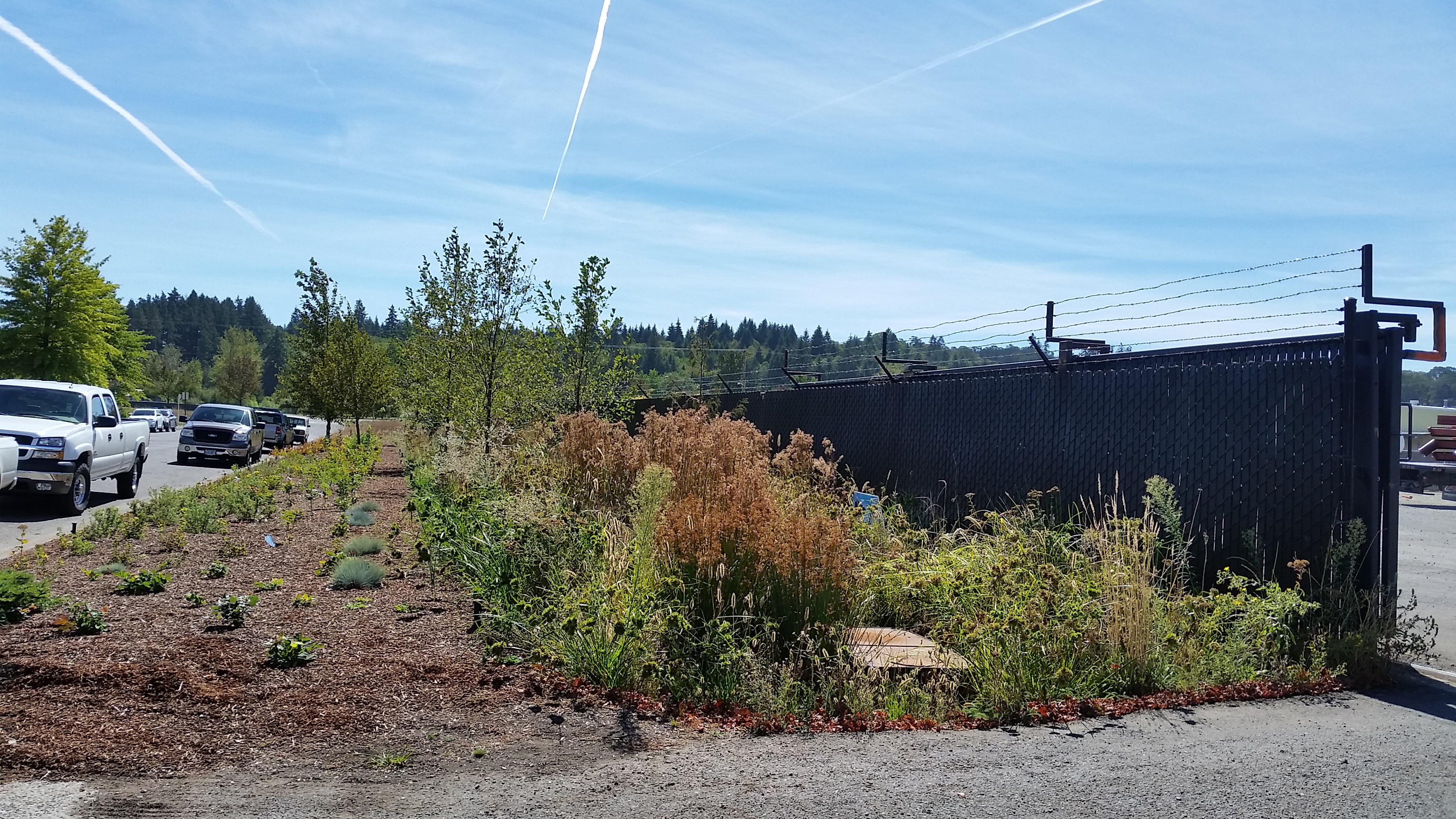This industrial site is the home of a metal fabrication facility, so keeping metals out of the stormwater system can be a challenge. Gibson Steel Basins reached out to the LTWC for assistance in 2014, and has taken on a new water quality improvement measure every year since. Work started with the installation of a 3,300 sqft rain garden treating an acre of impervious surface. Later, this was modified to treat an additional half of an acre. During the first summer, a pair of ducks chose to raise their young in the rain garden until the water dried up. The family of ducks may be the reason the invasive bullfrogs disappeared. Pollinators were thrilled with the next phase: planting the area between the rain garden and the curb with 200 low growing, low maintenance plants that will greatly reduce the amount of pesticides applied to the landscape. Other projects have included covering a large galvanized roof with a membrane product, re-coating all on-site catch basins, and more frequent catch basin cleaning.
Restoration Techniques
- Rain Garden: Rather than piping runoff directly to the street, the rain garden cleans, cools, and delays stormwater through contact with soil and complex native plantings.
- Sediment Drop: Stormwater enters a double chambered catch basin where sediment is dropped out before water enters the rain garden. This is a critical component to maintaining a healthy green stormwater facility.
- Dense Plantings: By planting the wide area of bare bark mulch with diverse clay tolerant shrubs and ground covers, weeds are out-competed, removing the need for pesticides.
- Habitat: Adjacent to Amazon Creek and wetlands, this rain garden and adjacent plantings provide habitat connectivity through a heavy industrial zoned area
The completed rain garden offers both environmental and economic benefits including:
- Flood resiliency – Stormwater is delayed in facilities, allowing stormwater-receiving streams to accept the runoff over a longer period of time which reduces erosion and cut banks.
- Urban pollutant reduction – Heavy metals, pesticides, petrochemicals, sediment, nutrients and excessive heat can all be efficiently managed in rain gardens.
- Wildlife & pollinator habitat – Rain Gardens planted with at least 70% native plants provide food and shelter otherwise not available to pollinator and other native species in urban areas.
- Improved in-stream water quality – By slowing, cooling and cleaning stormwater in rain gardens, stormwater receiving streams have improved fish, amphibian, and macro-invertebrate habitat.
- Distinctive signage – Highlighting the sight as an example of a Trout Friendly Landscape educates passers-by, visitors and employees that all landscapes have an important roll to play in healthy ecosystems!

